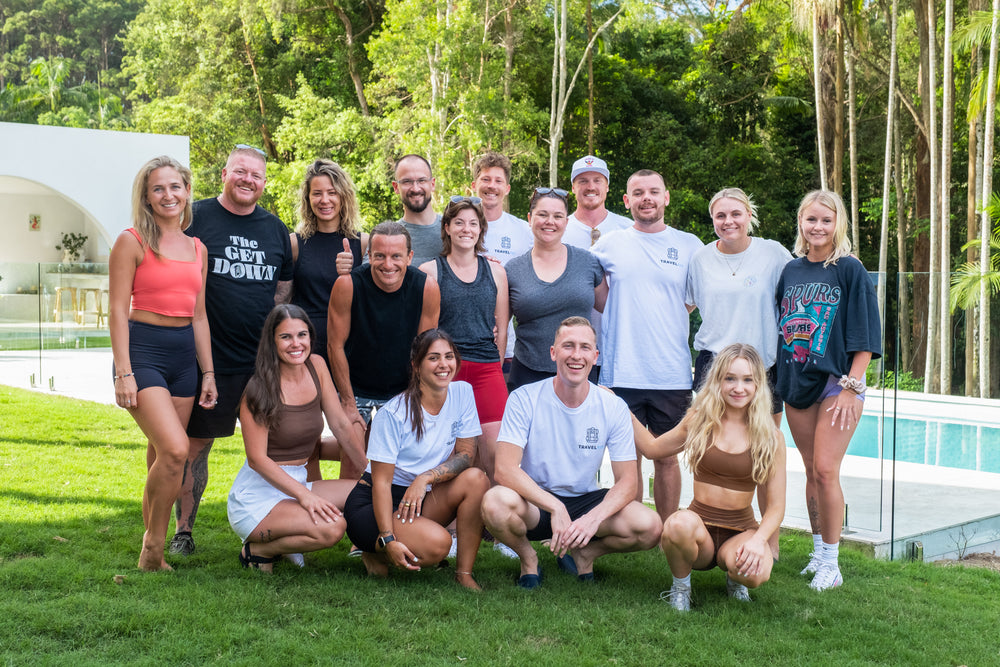The Powerful Impact of Anti fragility and Why Resilience Falls Short

The Dance of Adversity
In the intricate dance of life, we all find ourselves twirling through moments of challenge and adversity.
It's during these moments that our response truly defines our journey, both personally and professionally.
In the spotlight of this article, two extraordinary terms emerge – "resilience" and "anti fragility."
These concepts share the stage as they both promise to help us navigate adversity, yet they perform fundamentally different roles.
Join us as we journey into the realms of resilience and anti fragility, discovering what sets them apart and why anti fragility steals the show.

Resilience
The Rubber Ball Resilience is the well-known hero of the story.
It's the rubber ball that bounces back after taking a hit.
Imagine life as a series of collisions, and resilience is the ball that maintains its form, no matter how hard it's thrown.
Resilient individuals exhibit strength and adaptability, skillfully maintaining their equilibrium through life's ups and downs.

Anti fragility
The Phoenix Rising Now, imagine a different character entering the scene, the phoenix.
This mythical bird represents anti fragility, a term coined by Nassim Nicholas Taleb in his book "Anti fragile: Things That Gain from Disorder."
Anti fragility isn't satisfied with mere survival; it thrives on chaos and adversity, emerging stronger and more vibrant than ever. It's the phoenix rising from its ashes, renewed and more potent than before.

The Key Differences Between Anti Fragility and Resilience
A Dance of Opposites To understand why anti fragility steals the spotlight, we must explore the stark differences between these two concepts:
Response to Adversity:
- Resilience seeks to cope with adversity and return to its baseline, like a rubber ball regaining its shape.
- Anti fragility thrives on adversity, using it as a springboard to not only recover but also to improve and exceed the baseline.
Risk Aversion:
- Resilience tends to shy away from risk in its pursuit of maintaining stability.
- Anti fragility actively seeks out controlled risks, viewing them as opportunities for growth and evolution.
Adaptation vs. Evolution:
- Resilience adapts to the status quo, aiming to weather the storm without undergoing significant transformation.
- Anti fragility embraces dynamic environments, evolving and thriving amidst the chaos, and constantly improving.

The Neurological Ballet
Resilience vs. Anti fragility Our brains take centre stage in the grand performance of our response to adversity, orchestrating the release of neuro chemicals and hormones.
Resilience:
- Resilience is accompanied by the release of cortisol, the body's stress hormone. While it can help manage short-term stress, chronic exposure to cortisol can be detrimental.
- In the face of adversity, the resilient brain focuses on maintaining stability, often leading to a reluctance to take risks.
Anti fragility:
- Anti fragility is linked to the release of brain-derived neurotrophic factor (BDNF), a champion of growth and development for neurons.
- When adversity knocks, the anti fragile brain doesn't cower; it sees an opportunity for growth and actively seeks novel experiences and challenges.

Trauma Response
Healing vs. Thriving In the most challenging moments, trauma tests the resilience and anti fragility of our souls.
Resilience:
- Resilience is a compassionate healer, helping individuals cope with trauma, manage symptoms, and return to a semblance of normalcy.
- However, a resilience-focused approach may inadvertently limit personal growth beyond the realm of recovery.
Anti fragility:
- Anti fragility views trauma as a catalyst for transformation and personal development.
- It empowers individuals to harness the power of trauma, emerging not just healed but stronger, wiser, and more resilient than ever before.

The Nervous System
Reacting vs. Adapting Our autonomic nervous system plays a critical role in this grand performance, determining whether we merely react or adapt gracefully.
Resilience:
- The sympathetic nervous system (the fight or flight response) takes the lead during adversity, preparing the body to react to immediate threats.
- While this response is vital, chronic stress and burnout can lurk in its shadow.
Anti fragility:
- Anti fragility calls upon both the sympathetic and parasympathetic nervous systems, achieving a harmonious balance.
- This dual engagement allows individuals to respond to adversity with equilibrium, promoting better overall well-being.

Personal and Professional Implications
Navigating Life's Dance Floor Now that we've unraveled the dance of resilience and anti fragility, let's explore their implications in both our personal and professional lives.
Personal Life:
- Resilience is a trusty companion in weathering personal crises, but its comfort zone may inadvertently stifle our personal growth.
- Anti fragility, on the other hand, empowers us to embrace adversity as a catalyst for personal development, ultimately leading to greater resilience in the long run.
Professional Life:
- In the workplace, resilience is the steadfast guardian of managing stress and workload.
- Yet, anti fragility can be the secret ingredient that fosters innovation, adaptability, and a culture of continuous improvement.

Real-World Examples and Studies
Spotlights on Anti fragility To further accentuate the brilliance of anti fragility, let's illuminate it with real-world examples and studies:
Economic Systems
Nassim Nicholas Taleb's exploration of economic systems reveals how certain systems grow stronger after financial crises, while others crumble. This is a compelling real-world example of antifragility in action.
Mental Health
Research by Dweck and Yeager (2019) into the "growth mindset" illustrates that individuals who believe in the potential for personal growth through adversity exhibit higher levels of anti fragility in their psychological well-being.
Technological Innovation
Companies like Amazon thrive in uncertain environments, consistently experimenting and evolving their business models.
Their success can be attributed to embracing anti fragility principles.

Embracing the Dance of Anti fragility
In the captivating duet between resilience and anti fragility, the latter emerges as the star of the show, casting a dazzling light on personal and professional growth.
While resilience serves as a dependable ally for enduring adversity, anti fragility empowers us to embrace it, harness its potential, and emerge not just unscathed but stronger, wiser, and infinitely more adaptable.
As we unravel the complexities of the neurochemical, psychological, and physiological differences between these two concepts, we find ourselves equipped to consciously cultivate anti fragility in our lives.
In doing so, we don't merely bounce back from adversity. We soar to new heights, thriving amidst the chaos and uncertainty that life invariably brings.
Let us aspire to embody the spirit of the phoenix, rising stronger and more magnificent from the ashes of life's challenges, ready to conquer the world's stage with resilience and anti fragility as our dance partners.
You might be wondering?
What is the main difference between resilience and anti fragility?
Resilience seeks to return to its baseline after adversity, while anti fragility thrives on adversity, using it as an opportunity for growth and improvement.
How does the neurochemical response differ between resilience and anti fragility?
Resilience is associated with cortisol release, while anti fragility is linked to the release of brain-derived neurotrophic factor (BDNF), promoting growth and development.
Can both resilience and anti fragility coexist in a person?
Yes, individuals can exhibit both resilience and anti fragility in different aspects of their lives or in response to different challenges.
Are there real-world examples of anti fragility?
Yes, economic systems that become stronger after financial crises and companies like Amazon that thrive in uncertain environments are examples of anti fragility.
How can I cultivate anti fragility in my life?
Embracing adversity as an opportunity for personal growth, seeking out controlled risks, and actively pursuing novel experiences can help you cultivate anti fragility in your life.

Chris Walker - Founder Of TravelFit
Chris is a Certified Personal Trainer, Strength and Conditioning Coach, Sports Nutrition Advisor, Breathing Performance Coach, Cognitive Behavioural Therapist Coach, Over 10 years experience in the health and fitness industry, while also running his own businesses since 2014 allowing him to implement and practice tools that allowed him to thrive in life.
In the past Chris experienced first hand on how to overcome his own severe anxiety and depression through changing lifestyle habits and behaviours through holistic health.










Leave a comment